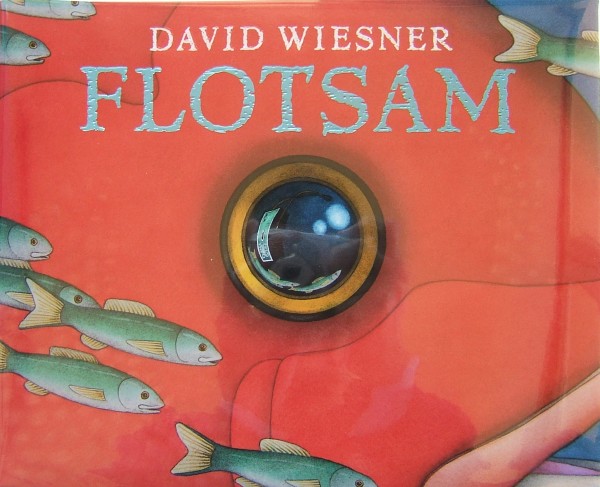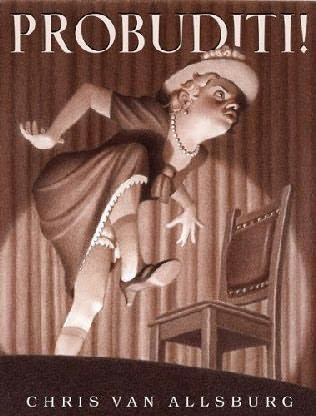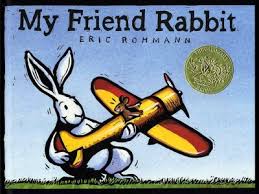Bubble Bath Pirates- Jarrett J. Krosoczka
Type: Picture book- watercolor
Rating: 3 Stars, intended for young children ages 4-7
This book is about two young boys and their mother pretending to be pirates during bath time. The mother is trying to get her rowdy pirates to take a bath, while using pirate like language. For example, to “ready the cannons” and “fire” is the terminology they use for unplugging the drain and hearing the water rush down.
I checked out this book because I remember seeing it around my school’s library when I was younger. I think the way the author uses pirate lingo within the story is a very clever use of words. Also, the watercolor cartoon drawings are very bright and colorful and add a certain amount of fun to reading the story.
Although I enjoyed this book for the entertainment value it has, I do not think that there is really an area of curriculum in the classroom that this book would fit into, except silent sustained reading or the writing workshop. This book could be a good tool to use within a writing workshop to show students that writing can come from any subject area or experience that an author wants to pull from, even something as simple as taking a bath. So, even though I enjoyed the book, I gave it a 3 star rating because of its lack of curriculum connection in the classroom
Pssst!- Adam Rex
Type: Picture book
Rating: 4 Stars
Intended for elementary students ages 6-10
This picture book is about a little girl’s adventure to the zoo. All of the animals keep saying, “Pssst! Come here!”, and when she does they tell her things that they want her to go get for them. For example, the pigs want some trash cans; the penguins want paint, etc. And you do not find out why until the end of the book
I personally thought this book was really clever. It gives a very unique voice to all of the individual different animals and personifies them all in different ways. Also, the end of the story is a complete surprise to the reader, because nothing happening within the bulk of the story seems to have any real plot to it, but when you get to the very last page of the book, everything that has happened in the story comes together and gives the reader a moment of clarity.
I think a book like this would work really well in the classroom as either a reading aloud book, or as an example of personification and twist endings. The antics of the animals throughout the book would keep a student’s attention, and asking the class questions about why they think the animals want these specific objects would make for good class discussion while the book is being read as well as bring forward good predictions about what is going to happen at the end of the book.
I have not used this book in a lesson, but I would have no worries about doing so. It is a good example of various literary elements such as personification and suspense. I think this book could spark a very good discussion in a classroom, as well as keep the class’ interest. It also provides ample opportunity to get the students excited about reading books- the variety of different animals can open up the way for using multiple voices that can add to the story and make it even more enjoyable for the student, according to Mem Fox.
Hattie Hippo- Christine Loomis, Illustrations by Robert Necbeckar
Type: Picture Book with watercolor paintings
Rating: 5 stars
Intended for children ages 5-10
This is a comical story about a young hippo named Hattie. She likes doing many different things, but is rather clumsy. She misses getting caught by her dance partner, she eats all of the food for her guests at a tea party, and she makes all the water fly of the pool when she does a cannonball.
As a child, I always loved Hattie the Hippo books, mainly because of the character of Hattie. She is an imperfect character who becomes lovable because of her flaws- just like everyone, and she is also good at something, just like everyone. Hattie always showed me that it was okay to not be perfect all the time at everything. I also really enjoy the watercolor pictures of this book- they really add to the character of Hattie, and make you laugh as they show her mistakes in doing different activities.
I think this book would be really good to use in the classroom as a kind of ‘what’s the moral of the story’ lesson. Hattie is great for teaching a moral lesson, because even though she is imperfect, the kids will still love the character. I think this would work really well in a read-aloud format- the students would be occupied by the funny and colorful watercolors in the picture book, as well as Hattie the Hippo’s antics- ballet class, swimming, etc. I wouldn’t have any problems using this book in a classroom setting; there are no controversial elements to it, and reading this book aloud to a class is going to be enjoyable for both boys and girls.
Engelbert Sneem & His Dream Vacuum Machine- Daniel Postgate
Type: Watercolor Poem/Picture Book
Rating: 5 Stars
Intended for children ages 5-10
Engelbert Sneem is a watercolor picture book that has a rhyme scheme to it. It is about an evil man named Engelbert Sneem who steals children’s dreams with his vacuum, and puts them away in jars for only himself to enjoy and no one else. One night, he accidentally steals a nightmare with his vacuum, and when he looks at what he has caught he finds out that it was a nightmare about him. He is so broken down by this that he gives everyone’s dreams back to them and instead steals nightmares from children so they’ll never have to be scared again.
I loved this book! The rhyme scheme, the illustrations, and the main character mad this book so much fun to read. The rhyme scheme kept the flow and pace of the book going, and the illustrations were very interesting to see, because they have an eerie quality about them, but they are still not threatening. It’s almost as though you can see throughout the illustrations that Engelbert is a bad guy in the beginning, but still sense that he has some redeeming qualities about him that will come to play later in the book.
While I have not used this book in a classroom setting yet, I definitely hope to in the future. I think it is a really fun book that would get students excited about using poetry as much as Dr. Seuss books would. It also masterfully uses made up words to add comedy to the story while you read it. I think a book like this would really get a class excited about reading and writing, and also provide a challenge for them in sounding out and deciphering all of the made up words within the text.
One Scary Night- Antoine Guillappe
Type: Wordless picture book in only black and white
Rating: 4 Stars
Intended for children ages 5-12
This book is a wordless picture book that is illustrated only in black and white. It follows a young boy through the woods on his way home one night. While the focus is on the boy, in every page you can see a wolf like creature following him and hiding behind trees, bushes, etc. In every frame, he gets close and closer to the little boy, until the very end of the book when the wolf jumps on top of the boy. You think the boy has been attacked, until you turn the page and see that the boy is smiling and playing with the wolf.
I thought this book was really clever through its use of only pictures. Even though there were no words in this book, the pictures were enough to instill a sense of urgency and fear upon me, as well as keep me guessing about what was going to happen. Even though the illustrations were very basic, they still added a lot to the story.
I, personally, think that this picture book could be used in a big variety of grades. Since many young children start out writing and conveying meaning through pictures, a book like this would be very good for them to use. Then, as you move up through the grades, you can focus on the different elements that the story has, such as plot, suspense, characters, climax, declination, etc. Even though it is a picture book, it can be used in virtually every elementary grade, which I think is a really good aspect of t his book.
I have not used this book with students, but I would really like to. I actually think I am going to use t his book in the upcoming weeks with my reading buddy for my Block A class. She really does not like reading, and because of that is reluctant to do activities with any of the books I bring in. I’m really curious as to how she’ll respond to a wordless book.




















